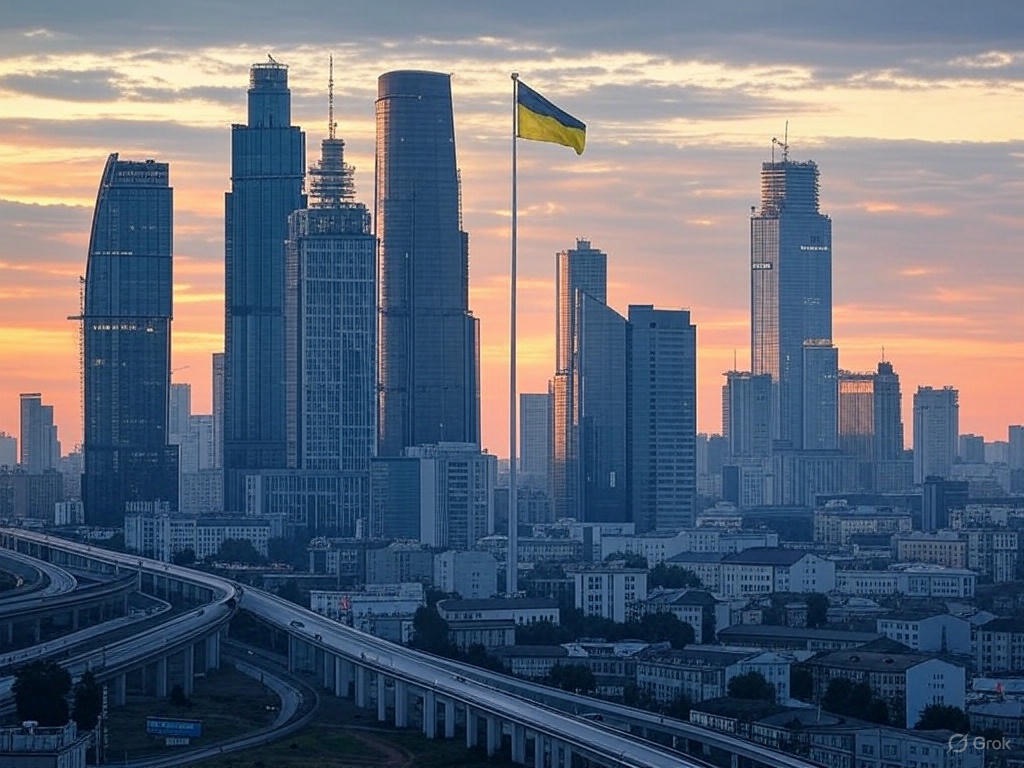To understand why international investors are keenly observing the Philippines, much like prospectors searching for a 21st-century bonanza, one striking statistic stands out: 168 million mobile connections in a nation of 116 million. Indeed, Filipinos possess more mobile devices than they have places to keep them.
Welcome to the Philippines’ digital economy a high-octane, rapidly evolving system built upon a young, mobile-adept population, a substantial diaspora injecting billions, and a government increasingly keen to attract foreign investment. For investors, this is more than just another emerging market; it’s a digital El Dorado in Southeast Asia.
So, what renders the archipelago of over 7,000 islands so compelling for FDI (foreign direct investment)? Let’s explore the key sectors and be warned: there’s considerably more to it than selfies and TikTok routines.
Fintech & Diaspora: Where Remittances Converge with Digital Innovation
Filipino fintech is flourishing and the figures confirm it. Since the pandemic, digital payments and e-wallets have experienced double-digit expansion, with apps like GCash processing billions in transactions monthly. Fueling this upswing is a potent factor: remittances. With roughly 10 million Filipinos employed overseas, the country receives about 10% of its GDP as remittance income a consistent flow of dollars ready for faster, cheaper, and more efficient transfer.
Prominent players like Mynt’s GCash (supported by Alibaba’s Ant Group), PayMaya, and Coins.ph lead this field, alongside neobanks such as Tonik. However, the niche opportunities are particularly exciting: platforms linking diaspora savings to local investments, or blockchain-based remittance solutions that drastically cut fees. And the prime advantage for foreign investors? The Bangko Sentral ng Pilipinas (BSP) has fully opened access, permitting up to 100% foreign equity in digital banking and e-money services. Just bear in mind cash remains prevalent in rural areas, so don’t rely entirely on a cashless future just yet.
E-Commerce: The Online Shopping Transformation
The Philippines’ e-commerce sector is one of Southeast Asia’s fastest-growing, propelled by as you might expect mobile-first consumer behavior. Urban consumers are filling online baskets on Shopee, Lazada, and TikTok Shop with items ranging from electronics to groceries, and even rural SMEs are connecting with B2B marketplaces like Growsari.
The government has been actively supporting digital commerce through tax incentives, training initiatives, and infrastructure improvements. But investors should be aware: while the market is promising, logistics remain a significant challenge. Slow delivery, inconsistent addressing, and occasional internet disruptions mean that even the most robust e-commerce plan can encounter obstacles (sometimes literally). Nevertheless, with an expanding middle class and an appetite for online bargains, the long-term outlook is decidedly positive.
Digital Health: From Telemedicine to Wearable Tech
The pandemic significantly accelerated Philippine healthtech. Suddenly, telemedicine services like KonsultaMD and AIDE’s home healthcare became essential, not luxuries. The market, still in its early stages, is anticipated to reach nearly $1.4 billion by 2029, driven by an aging population, a growing middle class, and persistent healthcare deficits, particularly in rural regions.
Government measures such as the Universal Health Care Act and telemedicine regulations have paved the way for healthtech innovation. But foreign investors should proceed with caution: patient data privacy is strictly governed, reimbursement systems are still developing, and collaborations with local providers are frequently essential. A helpful tip: arrive with a focus on compliance, not just investment capital.
Online Entertainment: The Nation That Stays Connected
If you’re concerned about your screen time, consider the Philippines a country leading globally in social media usage. Here, online entertainment is more than a leisure activity; it’s a way of life. From Mobile Legends esports to Kumu livestreaming, to binge-watching Netflix and TikTok, digital content consumption is exceptionally high.
The government has even allocated resources to nurture creative industries, while corporations like Disney and Netflix are contracting animation projects to local studios. True, piracy and monetization persist as issues, but for investors interested in gaming, OTT platforms, or social content, this is a promising area. Just be prepared to deal with inconsistent IP enforcement and perhaps to engage a Gen Z demographic that is more familiar with memes than with political figures.
Logistics: Mastering the Last-Mile Challenge
What fuels the e-commerce expansion? Logistics and the Philippines is racing to upgrade this sector. Companies like Lalamove, GrabExpress, and Ninja Van are vying to master last-mile delivery across notoriously congested urban areas and remote islands. Coupled with the emergence of automation startups and even drone delivery trials, you have a logistics sector set for significant change.
Government spending on roads, ports, and expressways is beneficial, but the country’s geography an extensive island chain makes scaling difficult. Foreign companies often require local partnerships to solve the complexities, especially for cold chain or pharmaceutical transport. Consider it a high-stakes logistical puzzle with substantial returns.
Upmarket BPO: Moving Beyond Call Centers
The Philippines’ BPO industry is renowned but the current focus is on higher-value services. While call centers remain important, growth is shifting towards knowledge process outsourcing (KPO), fintech back-office operations, healthcare BPO, and creative services such as animation and game development.
Global giants like Accenture and Teladoc are already well-established, but the government’s favorable tax incentives and specialized economic zones (e.g., PEZA) create opportunities for new entrants. However, be mindful: competition from neighbors like Vietnam and India is intense, and the country’s increasing wages somewhat diminish its cost-effectiveness. Nonetheless, with one of the world’s largest English-speaking talent pools, the Philippines continues to be a major contender.
Why the Philippines? Demographics, Policy and Appeal
On a broader scale, the Philippines meets many criteria for attractive FDI. The median age is approximately 25, providing a young consumer market. Remittances and BPO revenues ensure foreign exchange stability. The National Broadband Plan and 5G deployments aim for broader connectivity, while the National ID system (PhilSys) simplifies customer verification for fintech and healthtech.
The government has offered a wide array of incentives: 100% foreign ownership in most digital sectors, tax holidays under the Investment Priorities Plan, and corporate tax reductions via the CREATE Act. Furthermore, a vibrant startup environment incubators, co-working spaces, venture funds—fuels continuous innovation.
But Hold On! Not Everything That Shines Is Gold
Naturally, challenges remain. Infrastructure deficiencies still persist, particularly in rural regions. Bureaucratic hurdles and unexpected regulatory shifts can hinder even experienced investors. Human capital, though plentiful, may sometimes lack the specialized expertise (cybersecurity, AI) that advanced tech enterprises require. And as for Mother Nature? Expect typhoons. Many of them.
In essence, the Philippines presents a dynamic and rapidly evolving digital landscape, fueled by its youthful, hyper-connected population, significant remittance inflows, and a government actively fostering a tech-forward environment. Across diverse sectors from fintech to e-commerce and beyond, innovation is palpable, driven by unique local conditions and increasing global integration. While navigating its complexities requires diligence, the archipelago’s clear momentum towards a sophisticated digital future offers a compelling narrative of transformation and opportunity within Southeast Asia.
Disclaimer: Important Legal and Regulatory Information
This report is for informational purposes only and should not be construed as financial, investment, legal, tax, or professional advice. The views expressed are purely analytical in nature and do not constitute financial guidance, investment recommendations, or a solicitation to buy, sell, or hold any financial instrument, including but not limited to commodities, securities, derivatives, or cryptocurrencies. No part of this publication should be relied upon for financial or investment decisions, and readers should consult a qualified financial advisor or regulated professional before making any decisions. Bretalon LTD is not authorized or regulated by the UK Financial Conduct Authority (FCA) or any other regulatory body and does not conduct activities requiring authorization under the Financial Services and Markets Act 2000 (FSMA), the FCA Handbook, or any equivalent legislation. We do not provide financial intermediation, investment services or portfolio management services. Any references to market conditions, asset performance, or financial trends are purely informational and nothing in this report should be interpreted as an offer, inducement, invitation, or recommendation to engage in any investment activity or transaction. Bretalon LTD and its affiliates accept no liability for any direct, indirect, incidental, consequential, or punitive damages arising from the use of, reliance on, or inability to use this report. No fiduciary duty, client-advisor relationship, or obligation is formed by accessing this publication, and the information herein is subject to change at any time without notice. External links and references included are for informational purposes only, and Bretalon LTD is not responsible for the content, accuracy, or availability of third-party sources. This report is the intellectual property of Bretalon LTD, and unauthorized reproduction, distribution, modification, resale, or commercial use is strictly prohibited. Limited personal, non-commercial use is permitted, but any unauthorized modifications or attributions are expressly forbidden. By accessing this report, you acknowledge and agree to these terms-if you do not accept them, you should disregard this publication in its entirety.



